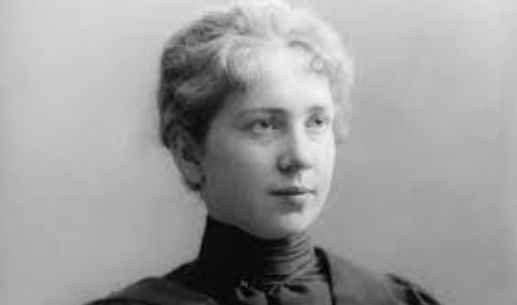Harriet Brooks was a physicist whose experiments helped to solve the question of what particles were emitted during radiation. As a young researcher in 1901, working in a newly established physics laboratory at McGill Univeristy, Brooks showed that radioactivity involved the creation of an entirely new atomic element. Working along with Ernest Rutherford, her mentor, she identified the element that was later named radon. Unfortunately, over time, Rutherford was deemed the “father of nuclear physics” for work done by Brooks, as her career in physics was cut permaturely short, because of her marriage.
Born in Exeter, Canada in 1876, Brooks was the first Canadian nuclear physicist and the first woman to earn a master’s degree from McGill University. SHe became Rutherford’s first graduate student assistant at McGill.
In her short tenure in her career, she resolved one of the most perplexing problems of early 20th century chemistry when she discovered that radioactive heavy elements release an entirely different element as they decay. Specifically, by analyzing emissions from the radioactive element thorium she determined that it wasnot just thorium in vapor form, but rather a new element, that we now call radon. This discovery demonstrated that radioactive elements transform to other elements, a fact that is core to the modern conception of radioactivity. Brooks’ contributions stand at the foundation of contemporary nuclear science.
Although Brooks authored research papers by herself and together with Rutherford, who vividly cited her work and gave her credit in his publications and lectures, Brooks’ contributions went largely unnotices and the discovery of radon attributed to Rutherford alone. It took 70 years after her death, for her contributions to be formally acknowledged and for her to be inducted into the Canadian Science and Engineering Hall of Fame, which did not occur until 2002. Still, in 2010, the American Physical Society honored Rutherford and Frederick Soddy, another collaborator for hteir work on radioactivity but Brooks’ contributions went unmentioned.
Brooks managed to overcome many obstacles over the course of her career. Her lack of wealth was addressed by earning fellowships. When she was dismissed from a teaching position at Barnard College as a result of her engagement, she found employment as a full-time researcher at the Curie-led Radium Institute in Paris, and later secured an appointment at the University of Manchester that allowed her to continue her work. It was only her marriage to a man who wanted her to settle down with him in Montreal, away from universities and research laboratories, that effectively ended her scientific career.
Awards & Honors
- Inducted into the Canadian Science and Engineering Hall of Fame in 2002, 70 years after her death.
Source:
Slate: Women have been disappearing from science for as long as they’ve been allowed to study science,by Karmela Padavic-Callaghan and Hossein Taheri, May, 2, 2022
